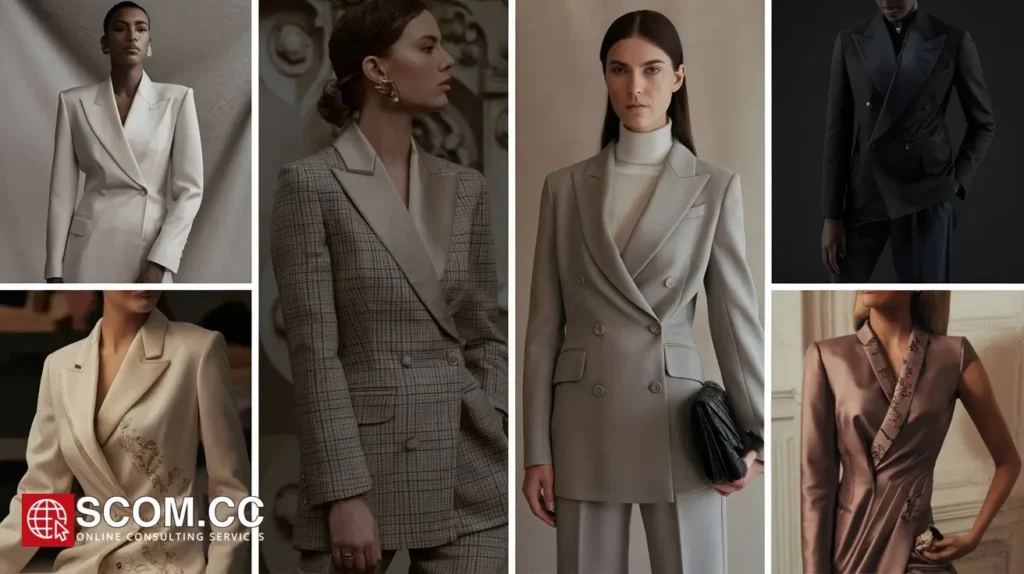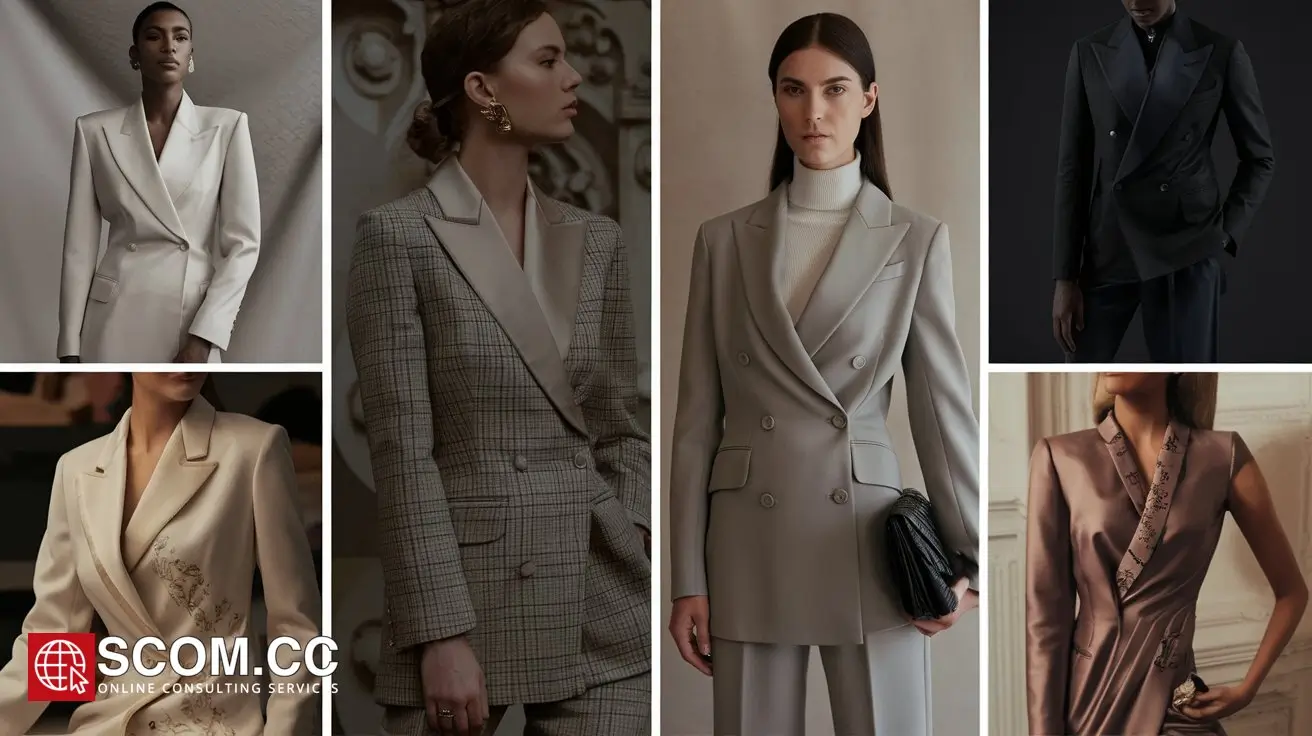How Can Tailors Find Inspiration for Innovative Custom Garments?

- How Can Tailors Find Inspiration for Innovative Custom Garments?
- Exploring Fashion History and Classic Styles
- Drawing Inspiration from Art and Design
- Engaging with Nature and the Environment
- Incorporating Cultural and Global Influences
- Embracing Modern Technology and Innovation
- Collaborating and Networking
- Reflecting on Personal Experience and Client Needs
-
FAQ
- 1. How can studying fashion history inspire modern designs?
- 2. What role does art play in fashion design?
- 3. How can nature influence fashion design?
- 4. What are some ways to incorporate cultural influences into tailoring?
- 5. How can modern technology enhance custom tailoring?
- 6. Why is collaboration important for finding inspiration in fashion design?
- 7. How can personal experiences and client feedback influence garment design?
- Conclusion
How Can Tailors Find Inspiration for Innovative Custom Garments?
In the ever-evolving world of fashion, finding inspiration is crucial for tailors aiming to create innovative and bespoke custom garments. Inspiration fuels creativity and helps designers push boundaries, resulting in unique and standout pieces. This article explores diverse sources of inspiration and methods that tailors can use to invigorate their designs and set new trends in custom tailoring.
Exploring Fashion History and Classic Styles
Studying Historical Fashion Trends
Fashion history offers a rich tapestry of styles and trends that can inspire contemporary designs. Exploring historical eras such as the Victorian, Edwardian, Roaring Twenties, or Mid-Century Modern can provide valuable insights into timeless elements and craftsmanship techniques. Analyzing these periods helps tailors understand how classic styles can be reinterpreted to create innovative custom garments.
Classic Tailoring Techniques
Delve into classic tailoring techniques and traditional garment constructions. Techniques such as hand-stitching, bespoke pattern drafting, and luxury fabric manipulation provide foundational skills that can be adapted and modernized. Revisiting these classic methods with a fresh perspective can lead to innovative designs that honor tradition while embracing modern aesthetics.
Drawing Inspiration from Art and Design
Art Movements and Styles
Art movements such as Impressionism, Cubism, Art Deco, or Surrealism can offer unique design concepts and color palettes. Tailors can draw inspiration from famous artworks, sculptures, and visual art installations to incorporate artistic elements into their garments. For example, the geometric patterns of Art Deco can influence fabric prints and garment cuts.
Design and Architecture
Architectural styles and interior design trends can also inspire fashion design. Elements such as modernist lines, ornate details, or minimalist aesthetics found in architecture can be translated into garment structures and embellishments. Building facades, interior spaces, and urban landscapes provide a visual vocabulary that tailors can creatively adapt.
Engaging with Nature and the Environment
Natural Landscapes and Elements
Nature is an abundant source of inspiration for design. From the colors of a sunset to the textures of tree bark or the patterns in animal fur, natural elements can spark creativity. Tailors can use natural dyes, organic fabrics, and nature-inspired patterns to create garments that reflect the beauty and diversity of the environment.
Seasonal Changes and Weather Patterns
Seasonal changes offer a dynamic palette of colors and textures. Spring blooms, summer sunsets, autumn foliage, and winter landscapes can all influence fabric choices, color schemes, and garment designs. Additionally, weather patterns like rainbows, storms, and fog can inspire unique visual effects and fabric treatments.
Incorporating Cultural and Global Influences
Exploring World Cultures
Cultural diversity provides a wealth of inspiration for innovative designs. Study traditional costumes, textiles, and craftsmanship from various cultures around the world. Incorporate elements such as Japanese kimono fabrics, African beadwork, or Indian embroidery into custom garments to create cross-cultural fusion pieces that celebrate global artistry.
Travel Experiences and Local Artisans
Traveling exposes tailors to new perspectives and local craftsmanship. Explore marketplaces, artisan workshops, and cultural festivals to discover unique textiles, patterns, and techniques. Engaging with local artisans can also provide collaborative opportunities and fresh ideas for incorporating traditional techniques into contemporary designs.
Embracing Modern Technology and Innovation
Digital Design Tools
Utilize digital design tools to experiment with new concepts and visualizations. 3D modeling software, virtual reality, and augmented reality can help visualize how different fabrics and designs come together. Tools like CLO 3D and TUKAcad offer interactive environments to test and refine innovative ideas before physical production.
Fashion Technology and Smart Textiles
Incorporate fashion technology and smart textiles to push the boundaries of traditional tailoring. Experiment with interactive fabrics, wearable tech, and responsive textiles to create garments that offer unique functionalities or incorporate innovative features. Exploring these technologies can lead to groundbreaking designs that blend fashion with function.
Collaborating and Networking
Design Collaborations and Workshops
Collaborate with other designers, artists, or professionals in related fields. Design collaborations often lead to creative cross-pollination and new perspectives. Participate in workshops, design residencies, or fashion incubators to gain exposure to different techniques and ideas. Networking with industry peers can provide fresh insights and foster innovative thinking.
Fashion Shows and Industry Events
Attend fashion shows, trade shows, and industry conferences to stay updated on the latest trends and innovations. Observing emerging styles, new fabric technologies, and cutting-edge designs can spark ideas and inspire new directions for custom tailoring. Engaging with industry leaders and visionaries can also provide valuable feedback and guidance.
Reflecting on Personal Experience and Client Needs
Personal Experiences and Interests
Tailors can draw inspiration from their own experiences, hobbies, and interests. Personal stories and passions can infuse designs with authenticity and originality. Whether it’s a love for vintage cars, classic literature, or music genres, incorporating personal elements into designs can result in unique and meaningful garments.
Client Feedback and Preferences
Engage with clients to understand their preferences and needs. Client consultations and feedback sessions offer valuable insights into what they desire from custom garments. Tailoring designs to meet individual client needs not only ensures satisfaction but also provides inspiration for creating innovative and personalized pieces.
Summary Table: Finding Inspiration for Innovative Custom Garments
| Source of Inspiration | Description | Examples |
|---|---|---|
| Fashion History and Classic Styles | Study historical fashion trends and classic tailoring techniques for timeless and adaptable design elements. | Victorian fashion, classic tailoring techniques |
| Art and Design | Explore art movements and architectural styles for unique design concepts and color palettes. | Impressionism, Art Deco, modernist architecture |
| Nature and the Environment | Draw inspiration from natural landscapes, seasonal changes, and weather patterns. | Sunset colors, tree textures, seasonal palettes |
| Cultural and Global Influences | Incorporate elements from various cultures and global art forms. | Japanese kimonos, African beadwork, Indian embroidery |
| Modern Technology and Innovation | Use digital tools and smart textiles to explore new design possibilities and functionalities. | 3D modeling software, interactive fabrics |
| Collaboration and Networking | Engage with other designers and attend industry events to gain new insights and perspectives. | Design collaborations, fashion shows |
| Personal Experience and Client Needs | Reflect on personal interests and client feedback to create meaningful and personalized designs. | Personal hobbies, client preferences |
FAQ
1. How can studying fashion history inspire modern designs?
Studying fashion history provides insights into timeless styles and techniques that can be reinterpreted for contemporary designs. By understanding classic tailoring methods and historical trends, designers can incorporate elements of elegance and craftsmanship into their modern creations.
2. What role does art play in fashion design?
Art plays a significant role in fashion design by offering unique concepts and color palettes. Art movements and styles, such as Impressionism or Art Deco, can inspire garment patterns, textures, and color schemes, adding artistic flair and originality to fashion pieces.
3. How can nature influence fashion design?
Nature provides a diverse range of colors, textures, and patterns that can be translated into fashion design. Seasonal changes, natural landscapes, and weather patterns offer rich sources of inspiration for creating visually stunning and contextually relevant garments.
4. What are some ways to incorporate cultural influences into tailoring?
Incorporating cultural influences involves integrating traditional costumes, textiles, and craftsmanship from various cultures into garment designs. This approach celebrates global artistry and creates unique pieces that reflect diverse cultural heritage.
5. How can modern technology enhance custom tailoring?
Modern technology enhances custom tailoring through digital design tools, 3D modeling, and smart textiles. These technologies allow for precise pattern making, virtual prototyping, and the creation of garments with innovative features and functionalities.
6. Why is collaboration important for finding inspiration in fashion design?
Collaboration with other designers and industry professionals fosters creative exchange and introduces new perspectives. Workshops, design residencies, and fashion shows provide opportunities to explore fresh ideas and gain valuable feedback, leading to innovative design solutions.
7. How can personal experiences and client feedback influence garment design?
Personal experiences and client feedback offer valuable insights into individual preferences and needs. Reflecting on personal interests and engaging with clients allows designers to create customized and meaningful garments that resonate with their audience and reflect their unique style.
Conclusion
Finding inspiration for innovative custom garments involves exploring diverse sources, from historical fashion and art to nature, culture, and modern technology. By embracing these various influences and methods, tailors can infuse their designs with creativity and originality, setting themselves apart in the fashion industry. Utilizing inspiration from multiple realms ensures that custom garments are not only stylish but also unique and reflective of individual creativity.

To explore more about tailoring, visit our Blog of Tailoring. If you have any questions or need assistance, go to our contact page. Additionally, you can find more information about tailoring and consulting at this tailoring and consulting portal.

Leave a Reply